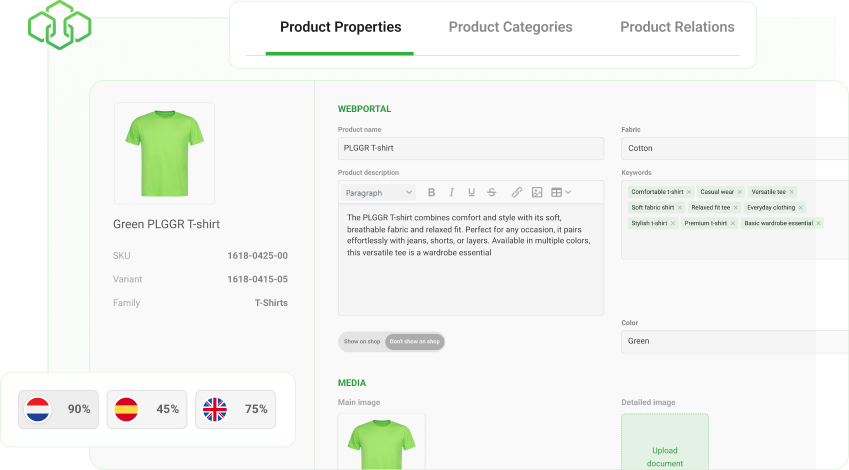
What is a PIM system and why it will become the standard in trade?
The way trading companies manage product information is changing at lightning speed. Just a few years ago, businesses were still asking: “What is a PIM, actually?” Today, the question we hear more often is: “How quickly can we implement a PIM?”
Product Information Management (PIM) has rapidly evolved from a nice-to-have into a strategic must-have. In this article, we explain what a PIM is, why it matters, and why the market is quickly moving toward an “I need a PIM” phase.
What is a PIM?
A Product Information Management-system (PIM) a central environment where all product data is collected, managed, and enriched. Think of:
- product names, specifications, and dimensions
- images, videos, and manuals
- multilingual descriptions
- connections to pricing, stock levels, and suppliers
In short: a PIM ensures one single source of truth for all product information.
Why is PIM becoming increasingly important?
The trading landscape is shifting. Customers and suppliers expect more, faster, and error-free. Three major trends are driving this change:
- Complete product information is critical for e-commerce
- More than 83% of global consumers are willing to shop elsewhere if they cannot find sufficient or satisfying product information.
- This strong preference highlights that consistent and complete product data is essential to retain customers and boost conversions.
- Incomplete, or worse, incorrect product information also leads to higher return rates, which can damage your brand.
- Multiple sales channels
- Trading companies no longer sell through just a single catalog or webshop, but also via marketplaces (Amazon, Bol.com), partners, and physical stores.
- Consistent product data is crucial to build trust and drive conversions across all these channels.
- Time-to-market as a competitive factor
- Companies with a well-structured PIM can launch new products up to 60% faster.
- In industries where speed is everything (such as consumer electronics, fashion, or seasonal products), this can make the difference between being a market leader or falling behind.
- The ability to instantly distribute product data across multiple sales channels and B2B customers gives wholesalers a significant competitive edge.
The shift from “What is a PIM?” to “I need a PIM!”
Only a few years ago, the PIM discussion revolved around what it actually is. Many companies considered it something only for large multinationals. The reality today is different:
- Mid-sized trading companies realize that Excel sheets and scattered systems are no longer enough.
- Digital-first retailers use PIM to move fast and capture market share.
- Suppliers face increasing demands from partners for consistent, high-quality data.
The conclusion is simple: a PIM is no longer a luxury it’s the foundation of modern commerce.
Conclusion
In the coming years, demand for PIM systems will only continue to grow. Companies that invest in a solid PIM strategy today not only gain control over their product data, but also secure a competitive advantage.
👉 Ask yourself: “What is it costing my business today if product data is inaccurate, incomplete, or not available on time?”
The answer makes it clear why a PIM is no longer optional, it’s a necessity.







